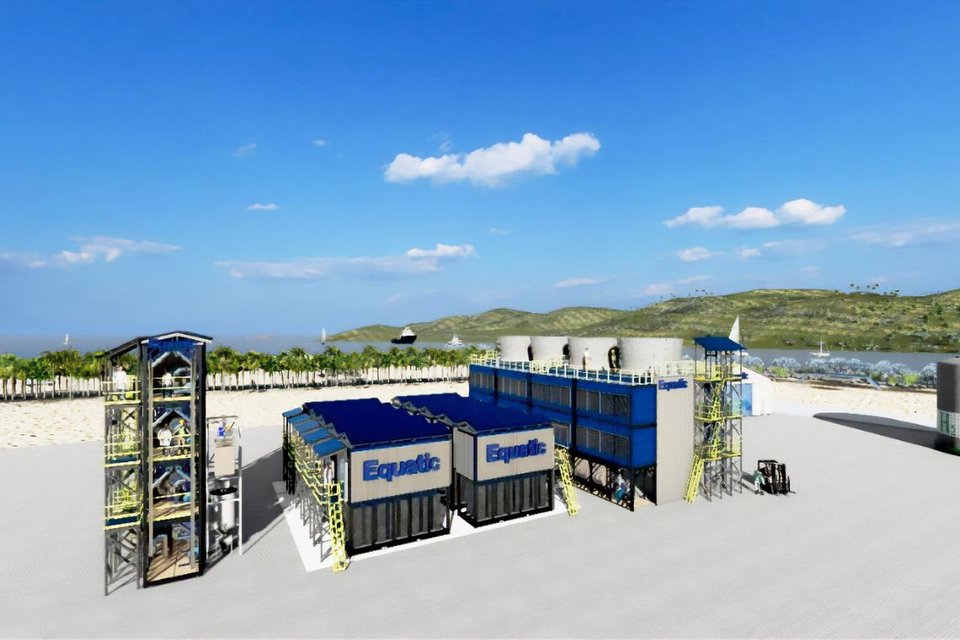World’s largest facility to help remove CO2 from the ocean to begin operations in S’pore in 2026

(Photo credit: Equatic)
Source: The Straits Times
The world’s largest facility to boost the ocean’s ability to absorb carbon dioxide (CO2) is set to begin operations in Singapore in the first quarter of 2026, with initial phases of installation to start by end-September.
The Equatic-1 demonstration plant in Tuas is a collaboration between national water agency PUB and American start-up Equatic, which developed the ocean-based carbon removal technology.
In essence, the technology works by changing the chemistry of seawater it takes in, by removing dissolved CO2 for long-term storage.
When that same volume of seawater is discharged back into the ocean after being processed to preserve the ocean’s chemistry, more CO2 from the atmosphere is able to dissolve in it.
If replicated on a large scale, this would, in theory, enable the ocean to soak up more of the planet-warming gas driving climate change.
However, scientists have warned that such manipulation could have impacts on marine life and the ocean environment.
The ocean covers 70 per cent of the earth, and is already considered a natural store of CO2, absorbing around 30 per cent of CO2 emissions from human activity.
The marine carbon dioxide removal technology, which aims to give the ocean’s natural ability to fight climate change a boost, is attracting investor interest.
On Aug 12, the Catalytic Capital for Climate and Health (C3H), an investment vehicle by Temasek Trust, announced that it was co-leading a US$11.6 million (S$14.9 million) Series A fund raising for Equatic with Kibo Invest.
The latter is a Singapore-based private investment office with a focus on climate technology. Temasek Trust is the philanthropic arm of Singapore’s investment company Temasek.
The investment will support the ongoing engineering scale-up of Equatic’s first commercial facility – previously announced to be in North America – as well as commercialisation, manufacturing and technological development of the technology, C3H said in a statement.
As for the Singapore plant, which takes in seawater from adjacent desalination plants, PUB said that it will initially have the capacity to remove 1 tonne of CO2 per day.
When fully operational, the US$20 million facility will be able to remove 10 tonnes of CO2 from seawater daily.
This is equivalent to taking roughly 870 average passenger cars off the road.
Within the plant, an electrical current is passed through the seawater. This leads to a series of chemical reactions that split the water (H2O) into hydrogen (H2) and oxygen (O2).
The dissolved CO2 is combined with minerals in seawater like calcium and magnesium to produce limestone and magnesium bicarbonates, which Equatic said can trap the CO2 for at least 10,000 years.
The process mimics the natural formation of seashells, and the solid calcium and magnesium-based materials can either be stored on the ocean floor, or potentially be used for construction materials.
In the meantime, the process also produces hydrogen, which is a clean source of energy. PUB had said that the planned facility could produce 300kg of hydrogen daily, which can power the plant or be used in other industrial applications.
The demonstration plant is co-funded by PUB, the National Research Foundation, Singapore, and the University of California, Los Angeles’ Institute for Carbon Management.
PUB has a target to achieve net-zero emissions by 2045 – five years earlier than the national target.
Identifying novel technologies is one way by which PUB is trying to reduce its carbon emissions.
